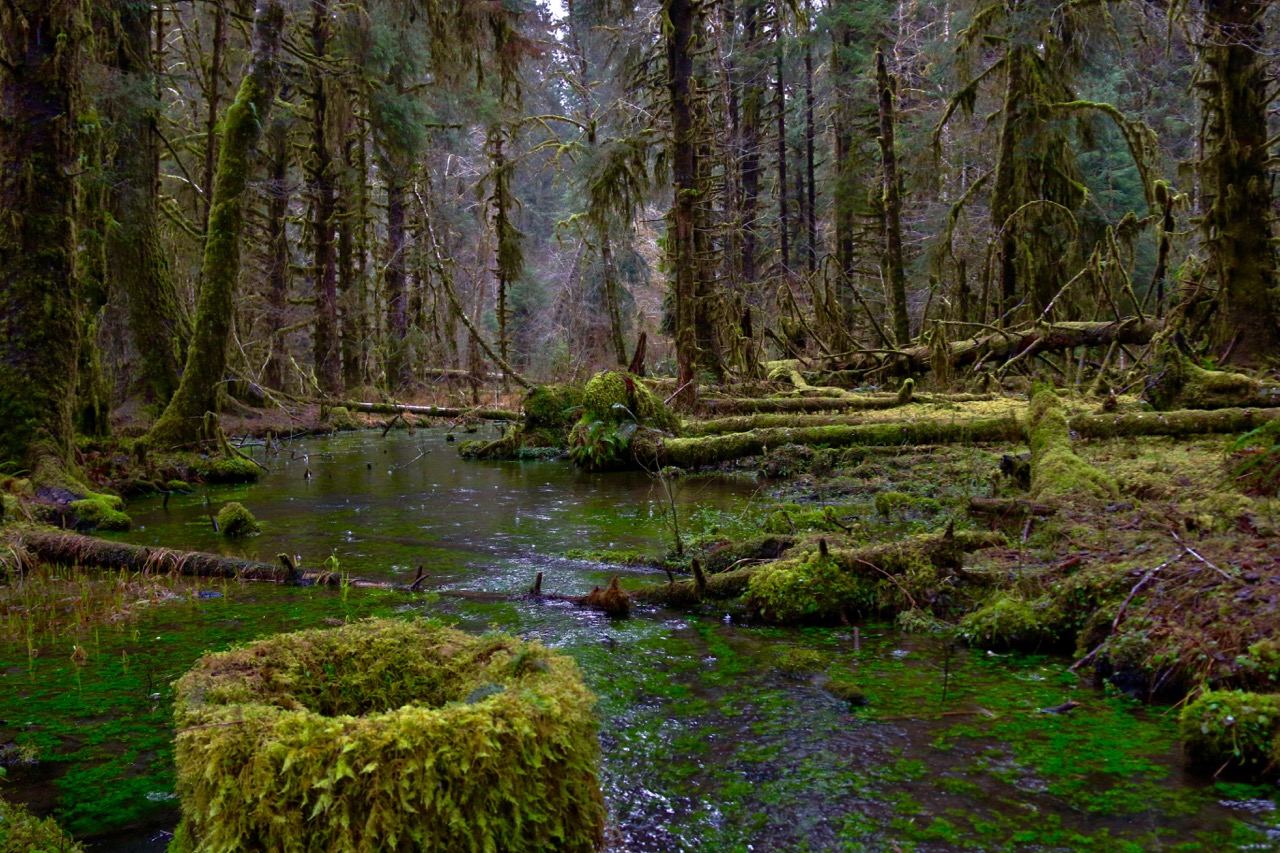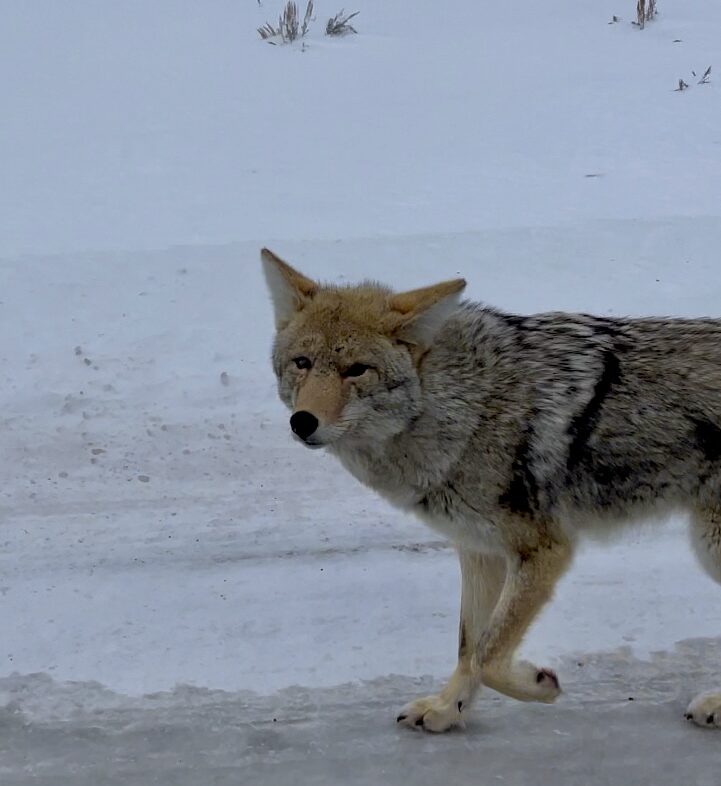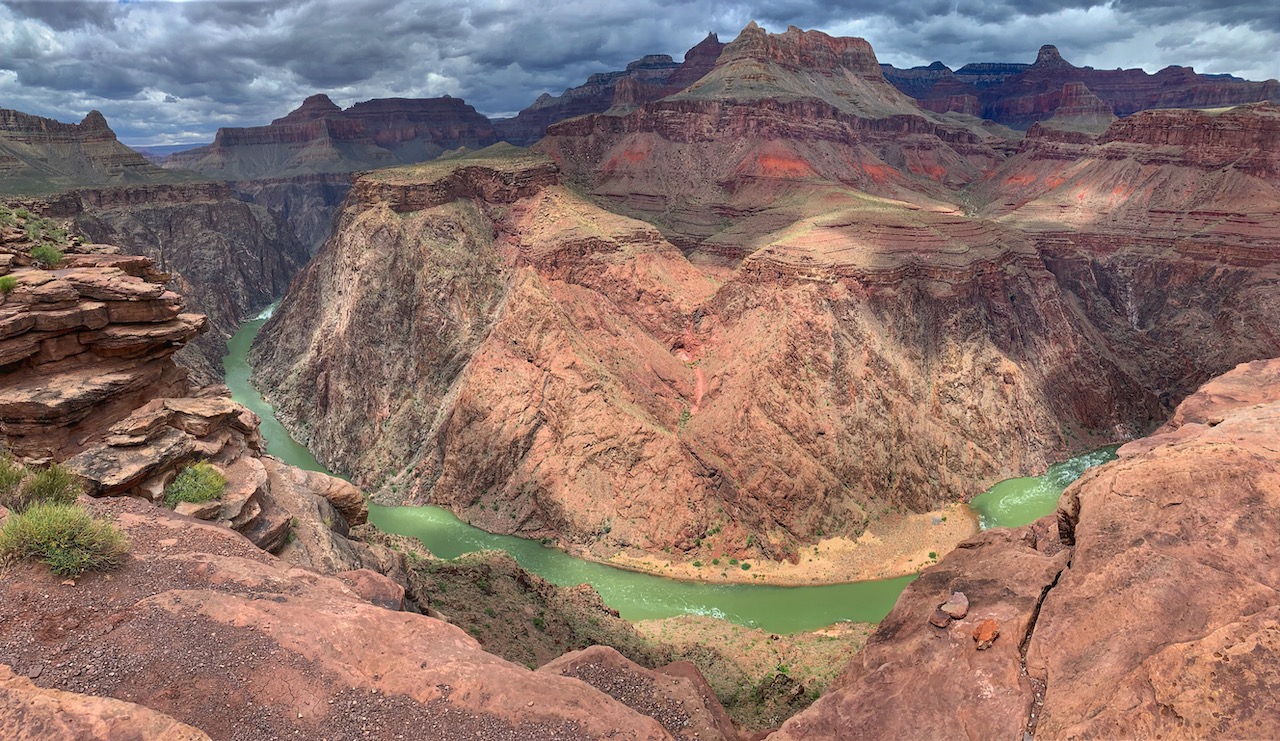As the gray covers the Pacific Northwest, negative attitudes about the weather become as commonplace as raindrops. When the clouds and dreariness return, a collective sigh is emitted, and pictures of the summer make #tbt that much more special. It seems like years ago that we were in swimsuits (hell, even in shorts) on the beaches or lakes, standing on top of mountains and drinking beer around campfires. We were cuddling in tents, tired after long days of exploring ever inch of of glaciated basins and tide pooled beaches. It seems like a lifetime ago that we were outside, falling in love, connecting with our friends, family and smiling in the wilderness. Then the gray returned.
The gray comes with winds. It comes with heavy rains flooding. It comes with an oppressive depression that blanketed the region. The drab sky also arrives with snow, which constantly needs to be returned to the mountains. The gray seeps into our brains, souring us on spending any time in the dwindling daylight hours. Retreating indoors, we check the weather, searching for a day of blue in the colorless, longterm outlook. In the streets of the cities around the Pacific Northwest, defeat is easily read on our faces. Locals switch attitudes like daylight savings time, our beaming summer smiles drop away, only to return after the Fourth of July. The color from the sky disappears and so does the optimistic spirit of the Pacific Northwest.
When the gray returns Pacific Northwesterners collectively duck, both the call of the wild and raindrops. While we don’t break out umbrellas, we do put on our raincoats or just avoid nature altogether. Regions once packed with nature lovers become empty shells of what they were on a sunny day. The now damp and windy Olympic Wilderness, just a few hours drive from Seattle, isn’t attractive to us. We used to look at it longingly, begging to to be in it, exploring and discovering. Now, we’d rather Netflix and chill, watch the game at a bar, or get lost in a book. We used to be so close to nature, but with the return of the gray, everything changed.
It probably won’t rain forever, and most are content in waiting out the bad weather in hopes that next weekend it will be sunny. As someone who grew up on the Washington Coast, I’d like to say “good luck with that.” Growing up in the rainforest, I quickly became immune to the rain. Sure, I still complain, and the constant lack of sun brings on seasonal depression, but that is life in the Pacific Northwest. We have to embrace the rain. We need to celebrate the wind. We need to fall in love with the gray, for better or worse.
While almost any trail in the Pacific Northwest can be considered a great “rainy day” hike, the Olympic Peninsula and Olympic National Park is a region where the weather truly doesn’t matter. In the heaviest of rain, when the ferns are soaked flat against the rainforest floor, the greens of the wilderness shine unlike any other time. The rivers roar, the waterfalls rage and the trees dance with the clouds in a timeless and soaking samba. The beauty of Olympic National Park in the rain is unlike anywhere else in the world and it needs to be seen by all. Next time the forecast calls for the dreariness to continue, buck up and head out to one of the seven amazing destinations. You can thank me later. That is, after you dry out your clothes and your toes/fingers get less pruney and wrinkly.
Remember to be safe and prepared for bad weather in Olympic with our helpful tips.
The Destinations

Staircase
Directions: http://goo.gl/maps/G3D77
With numerous mountains to climb, trails to explore and secret hidden lakes, the Staircase region of Olympic National Park is one of the most underrated areas in the National Park Service. In the summer, this region is ideal for hiking, backpacking, camping and swimming. The true beauty, however, is during the off-season when the rain is heavy and the trail becomes muddy. Your best hiking option will be the short 2.2 mile Staircase Loop Trail. If you haven’t explored the wonders of Staircase, this loop is the perfect introduction to this beautiful region. next to the tumbling powerful river, dodge muddy trail sections until you reach an amazing suspension bridge. take in all the sights and make sure you see the seven wonders of Staircase. For a longer option, consider the 10 mile round trip trek up the North Fork of the Skokomish River to Big Log. Keep in mind that during heavy rains, this option may have a few creek crossings that are impassible.
 LaPush
LaPush
Directions: https://goo.gl/maps/bpT3v4ZonKt
LaPush has three beaches in Olympic National Park, each as stunning as anything you will see on the entire West Coast of America. It may seem counterintuitive to hike in the rain along the coast, but there is something amazing about seeing the end of the continent in the wind and the rain. As giant waves slam against sea stacks, and wind whips through forested bluffs, wandering around the coast on low tide during nasty weather makes for a seriously authentic Pacific Northwest Adventure. The most-visited destination around LaPush is Rialto Beach and Hole in the Wall on the north side of the Quileute River. At just four miles round trip, this trek is full of amazingness in every direction. While Rialto Beach is great, the local favorite seems to be Second Beach on the south side of the river. Second Beach has the most dramatic seasick extending into the ocean and is located in an isolated and protected cove. The trail is about four miles round trip, and while there is a bit of elevation gain, it is worth the effort. Finally, Third beach is one of the lesser visited rainy day beaches in Olympic, and if you are lucky enough to come during a low tide, you can witness a waterfall plunging directly into the ocean.

The Hoh
Directions: https://goo.gl/maps/Jyjy137TvLz
The Hoh Rainforest is one of the most famous rainforests in the world. Across the globe, the Hoh is known for trees dripping with moss, a milky blue river fed from the glacier of Mount Olympus and endless fern-laden forests full of Roosevelt Elk. Receiving over 12 feet of rain each year, the Hoh lives up to its distinction of being a rainforest. While the region may be remote for most day hikers, a trip out to the western flanks of the Olympic Mountains is sure to inspire more rainy day adventures in Olympic. Most who visit take a few short hikes, including the always gorgeous Hall of Mosses Trail. However, for the truest experience in the Hoh, head upriver to the Mineral Creek waterfall. The trail is mostly flat, but expect some muddy sections of this 5.4 mile round trip trek. As you slowly gain 100 feet of elevation, wander through the forest made up of endless swaths of intense greens of every shade. Do not miss this hike, no matter what the season.

Quinault
Directions: https://goo.gl/maps/A4LgZq5aSxH2
While the Hoh gets the glory and fame, the Quinault Rainforest on the southwest corner of Olympic National Park is not to be overlooked. Full of wonder and beauty, and the home of the Enchanted Valley, the Quinault Rainforest is the ideal location to get fully immersed in the wilderness of Olympic National Park. Popular during the summer, the attendance at the Quinault sharply drops off the moment the rain starts to fall. This means pristine wilderness and mostly empty trails await those willing to “brave the elements” on gray days. Your two best bets of hiking inside the park are walking up the now washed out road to Graves Creek and Pony Bridge, or heading up the North Fork and enjoying the river views near Elip Creek. Irely Lake is also a great option out of the North Fork.

Gray Wolf
Directions: https://goo.gl/maps/SBpPQgQdgRQ2
Remote, wild and rarely visited by most visitors to Olympic National Park, the Gray Wolf region is a local favorite. While most will only hike the Lower Gray Wolf in Olympic National Forest, the beauty is just as impressive. The Gray Wolf is emerging as one of the more silent and tranquil destinations on the north end of the Olympic Peninsula, and for good reason. For those looking for an amazing adventure, follow the Gray Wolf River for the nineteen miles of forested trails leading you into some of the least visited wilderness on the Olympic Peninsula. During heavy rains and even lowland snow, many will hike in from the Lower Gray Wolf Trailhead in Olympic National Forest and enjoy the old growth forests and great river views. However, if the snow is high enough, starting your trek in from Slab Camp is a surefire way to have the solitude in wilderness that will reclaim your outdoor’s passion during the gray months. In the summer, starting at Slab Camp can make for an awesome, yet steep 16.8 mile panoramic loop up to Deer Park and Blue Mountain.

The Elwha and Sol Duc
Directions: Elwha- https://goo.gl/maps/qZ8ZuLBPU3N2
Sol Duc- https://goo.gl/maps/WwSQ1fJQvrK2
If pristine rivers, stunning waterfalls, intensely free forests and old cabins and shelters are what you desire to try to curb your off-season wanderlust, the hikes in the Sol Duc and Elwha Regions of Olympic National Park are second to none. When the weather is bad, a trip to the Sol Duc River and the always impressive Sol Duc Falls is needed. The beautiful drive is capped off with a short, but sweet trek to a beautiful triple-tiered waterfall and picturesque gorge. While stunning hiking destinations like the Seven Lakes Basin are miles further up the trail, seeing the falls after heavy rains in the perfect way to refuel your sense of wonder and amazement in nature. Close by, the Elwha River is yet another gem in the crown of Olympic National Park. While numerous closures make access to this region tough, the Elwha is world famous for not just stunning views and amazing history, but also for being the location of the largest dam removal project in American history. Hiking here can range from soaking in a hot springs to exploring old cabins and taking in the sights of Goblins Gate and the Dodger Point Bridge. The Elwha is a must see even in the heaviest of rains. Be aware that washouts have made the hikes in the Elwha much longer than they were a few years ago.

Dosewallips
Directions: https://goo.gl/maps/djqkcVhoeDv
Years ago, the Dosewallips River used to be a much more popular destination in Olympic National Park. However, thanks to a washout in the early 2000s, access to the region has been severely limited. Despite that, the old Dosewallips Road makes for the perfect rainy, off season trek, eventually leading to a mostly abandoned campground and great views of the river. With deer and elk constantly seen and numerous side trip adventures possible, a gray day along the Dosewallips is tough to beat. Whether you are passing by Dosewallips Falls, walking under huge maples or exploring the bridge near Dose Forks, this area is a perfect way to get outdoors and have some solitude in yet another gorgeous region of Olympic. This is an easy hike and not the most scenic in the region, but it should be seen often. The Dosewallips is pretty, and while it has a bad reputation, heading out here on a rainy day is far better than spending endless hours watching TV or trying to pas the time until it gets dark. Head out here and see an elk, watch eagles and listen to the constant roar of one of Olympic’s gorgeous river. Read our adventure running trip here.
Discover More Amazing Olympic National Park Destinations
Find a Hike a Week through our Olympic National Park Area Guidebook




